 Wolves WolvesWolf History, Conservation, Ecology and Behavior
[www.wolfology.com]
|
The Wolf's Body Language
|
1.
 2. 2. 3. 3.  4. 4. 5. 5. 1. This high tail position indicates dominance. 2. The horizontal tail position indicates alertness, as in hunting or attacking. 3. The lowered tail position is indicative of a relaxed state. 4. The half-tail tuck, accompanied by an arched back, indicates submission. 5. A fully tucked tail with sharply arched back indicates fear.
1.
 2. 2. 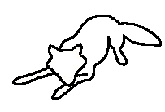 3.
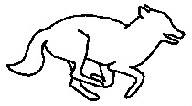 4. 4. 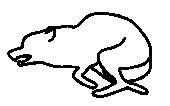 5.
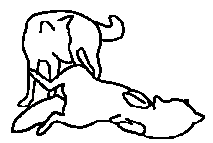 6. 6.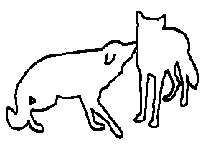 7.
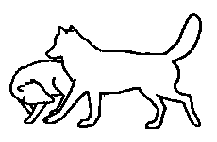 1. The body position of an aggressive, attacking wolf. 2. A playful pose. 3.Playful running. 4. Running in fear. 5. Passive submission by the wolf on the right to the dominant wolf on the left. 6. Active submission by the wolf on the left to the wolf on the right. 7. The wolf on the left is submitting to the dominant wolf on the right.
|